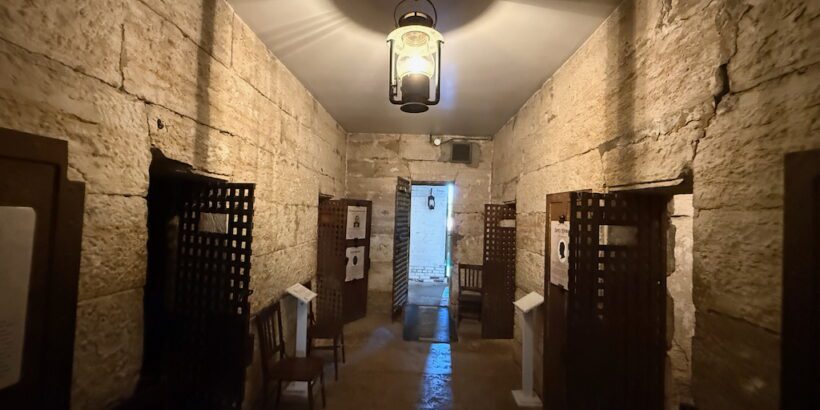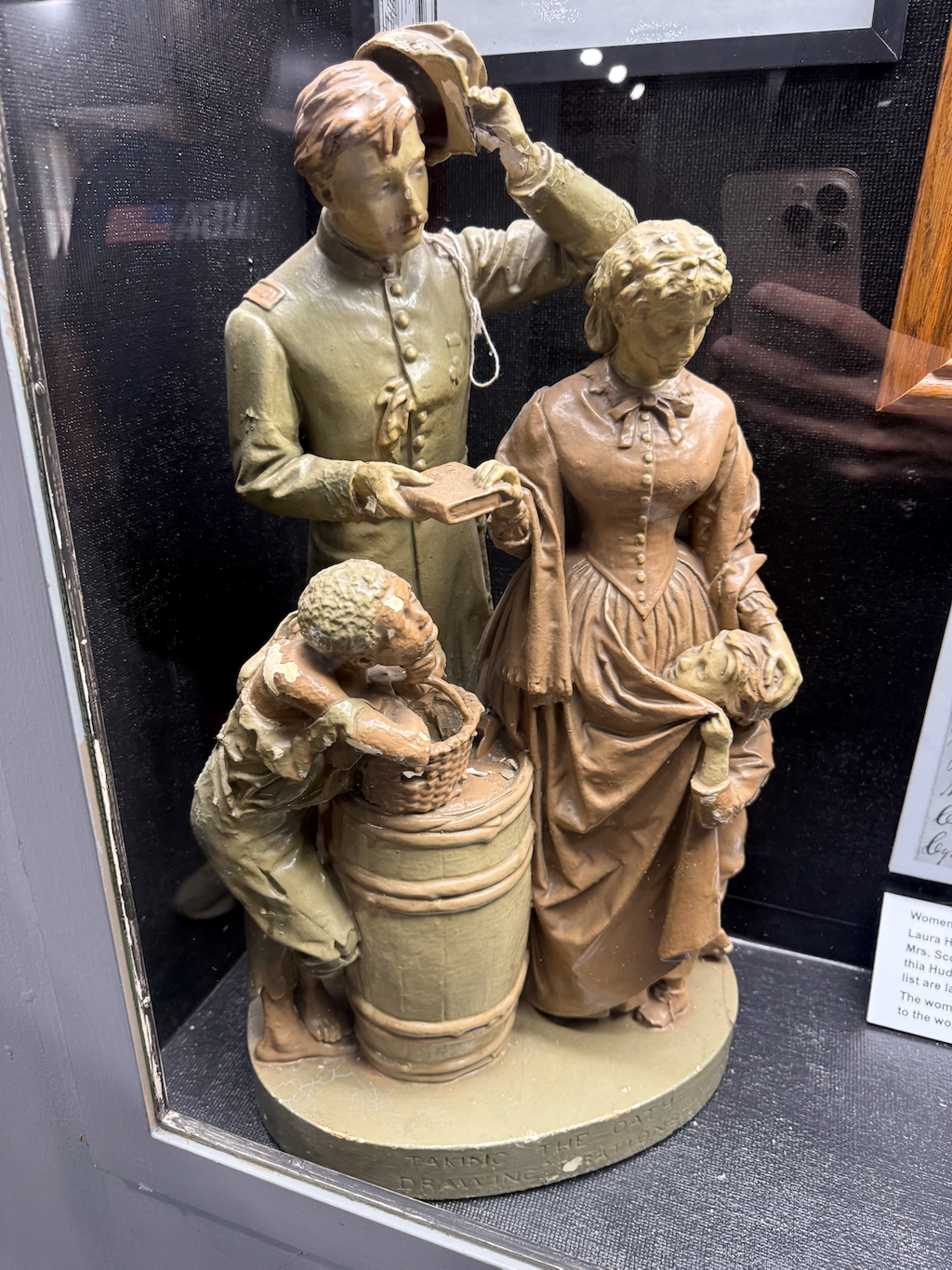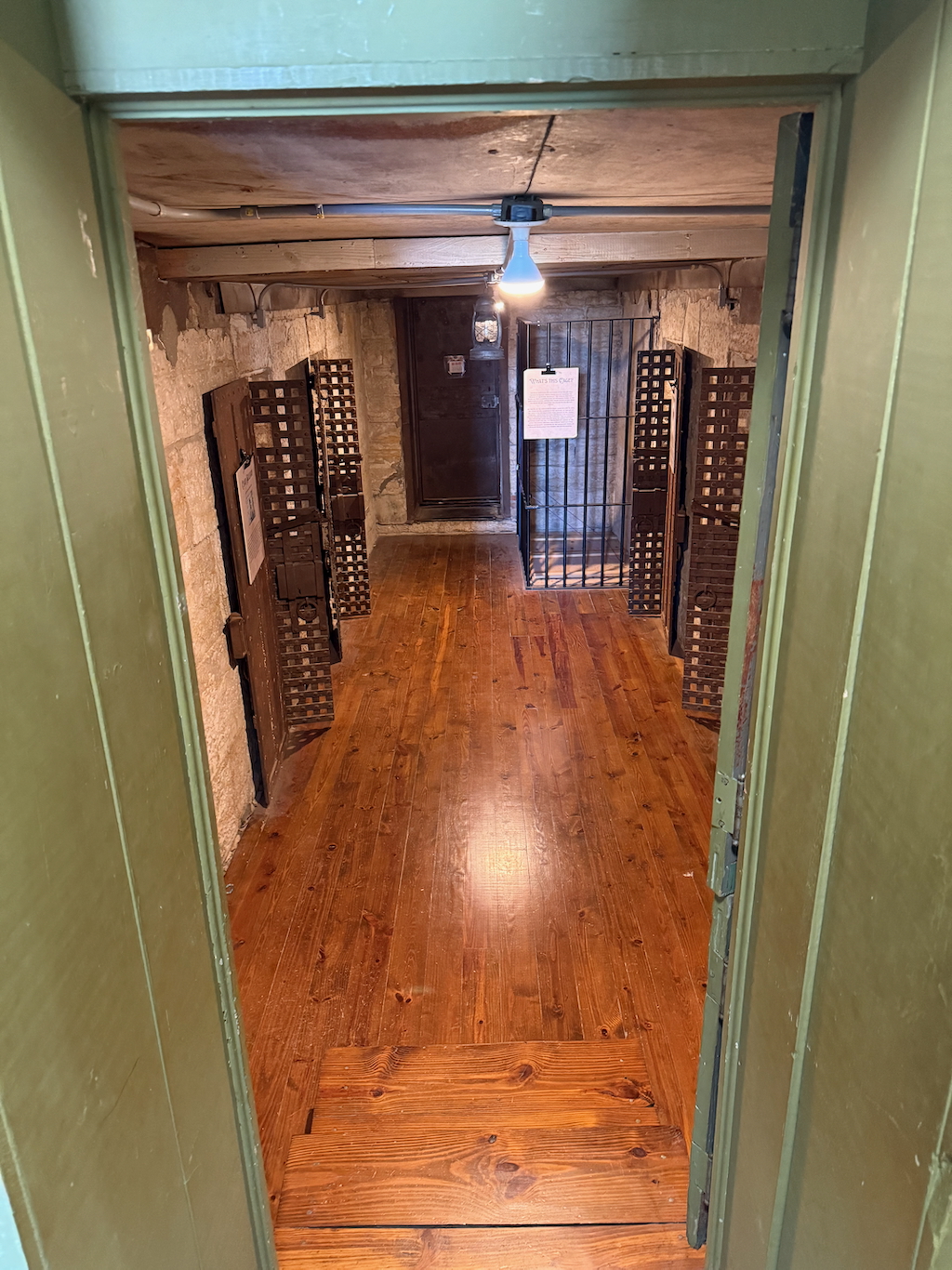There’s something about stepping into a historic jail cell that instantly transports you to another time—the clang of the iron door, the chill in the air, the crushing claustrophobia of the cramped space, and the stories lingering in the stone walls.
In Independence, Missouri, you’ve got one of the best chances to experience this firsthand at the 1859 Jail, Marshal’s Home & Museum. This well-preserved site lets you walk through the very cells where outlaws and ordinary folks alike were held, giving a real sense of what life was like on the frontier—and what justice looked like back then.
What is the 1859 Jail, Marshal’s Home & Museum?
The 1859 Jail, Marshal’s Home & Museum is a historic landmark located in downtown Independence, Missouri, that offers visitors a vivid glimpse into law enforcement during the turbulent days of the American frontier.

1859 Jail brief history
Constructed in 1859—just two years before the outbreak of the Civil War—this sturdy limestone building served as Jackson County’s primary jail, housing prisoners ranging from petty criminals to notorious outlaws well into the early 20th century.
Uniquely, the building combines both the jail and the jailer’s house under one roof (the jailer’s office was actually part of the house but had its own separate entrance). The jail itself had twelve cells—six upstairs and six downstairs—with thick limestone walls about two feet wide.
At night, the only light came from a single kerosene lamp hanging in the hallway. The cells were not heated or cooled and some prisoners died of exposure.
Each cell was about six by nine feet and meant to hold three people. However, during the Civil War, when civilians were brought into the jail, these tiny cells crammed up to twenty prisoners inside, which is honestly horrifying to think about after you’ve stepped into these cells.
The jailer’s wife cooked meals for both the family and the prisoners in a small kitchen at the back of the house and it’s reported the jailer earned about $50 a month (around $1,700 today) plus got to live in the house.
Exploring the jail
When you approach, you might only notice the house—the jail is tucked quietly behind it, almost hidden from view. This subtle layout can make you second-guess whether you’ve arrived at the right place, but you’ll see the signs posted outside the gate or front door (depending on where the entry is when you visit).
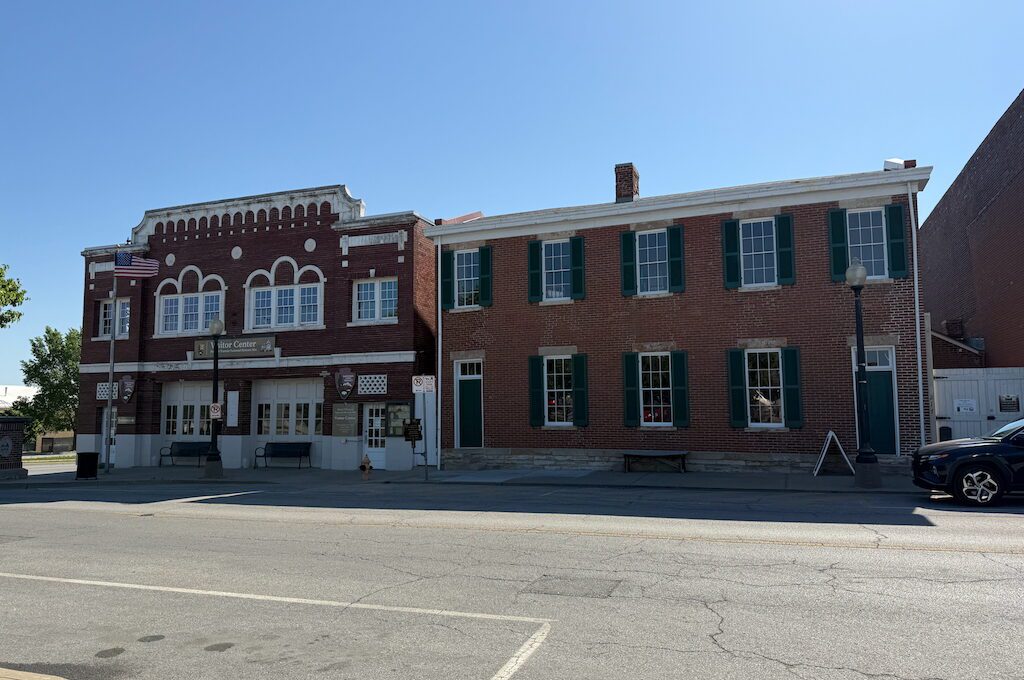
You’ll check in, pay the small entry fee, get your map, and then you’ll be all set to explore on your own.
Inside the jail, you’ll see several cells with heavy iron doors that still open and close just like they did back then. The metal clang sounds loud in the small space, and you can’t help but think about the people who were locked in there, sometimes for just minor offenses. The walls are rough and worn, and you can spot scratches and marks left by inmates long ago.
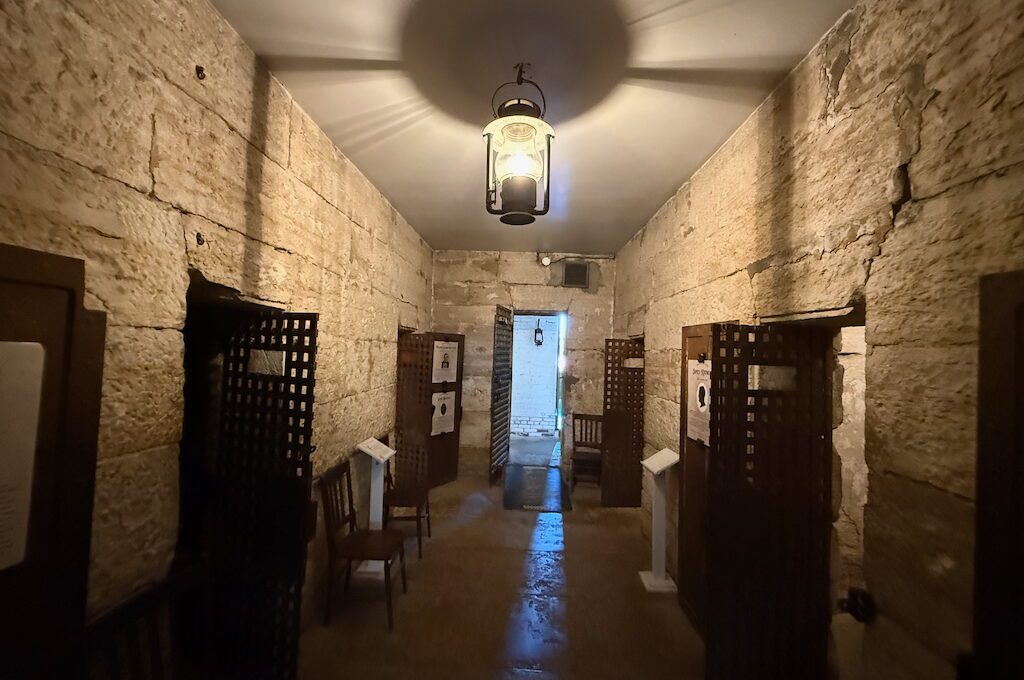
It’s a tight, uncomfortable space—and when Brad closed one of the cell doors behind me, my anxiety kicked in fast.

The jail housed some notable prisoners including Confederate guerrilla William Quantrill and Frank James, the older brother of Jesse James.
Frank was a prisoner for 112 days in 1882 for charges of robbery and murder. Unlike many other outlaws of his time, Frank was granted a relatively comfortable stay—reportedly allowed to roam the grounds, host guests, and he had a nicely furnished cell which is replicated today.

The jail has some pretty intense Civil War history.
In June 1862, it was declared a federal post, but just two months later, during the First Battle of Independence, the city changed hands when Confederate forces took control from the Union. During that battle, the jail was broken into, and all the prisoners inside were freed.
One notable prisoner was the city marshal, who was being held there at the time. Tragically, he was shot and killed by one of William Quantrill’s men.
There’s an upstairs area now connected to the second floor of the marshal’s house. You’ll notice a barred-off corner—that’s where the original jail staircase once led up. This was also the spot where some prisoners faced execution after the gallows were moved inside due to the public frenzy they would create.
Women were typically held upstairs, usually for offenses like larceny (theft), prostitution, drunk and disorderly conduct, assault, disturbing the peace, insanity, or “keeping a bawdy house.”
Touring the living quarters is surprisingly interesting. You’ll walk through the living areas and family bedrooms, all furnished to look just like they would have in the mid-1800s. It gives you a real sense of what daily life was like for the marshal’s family—just steps away from the jail cells.

The jail operated until 1933, and today it stands as a museum offering a glimpse into both the daily life of lawmen and the people they locked up.
The museum section in housed in a building that was added in 1907 to house chain-gang prisoners but those cells were all removed. Inside the museum, you’ll see all kinds of artifacts—old keys, ball and chains, even bones that were recently discovered on the property.


Outside, there’s a courtyard and the Howard Schoolhouse. The courtyard gave the prisoners fresh air and features a 19th century millstone and cast iron watering trough, which were aded in 1959 when the jail opened as a museum.
The schoolhouse was built in the early 1870s by William B. Howard who was a founder of Lee’s Summit, MO, and ironically was held at the prison for being a known southern sympathizer. The structure, designed for elementary kids, was moved to the grounds in 1959.


Final word
Visiting the 1859 Jail, Marshal’s Home & Museum isn’t just about looking at old walls and iron bars—it’s stepping into real history, filled with stories of tough lawmen, desperate prisoners, and a community trying to survive in uncertain times. It’s humbling to stand where people once lived under harsh conditions, where justice was often rough but very real.
Whether you’re a history buff or just curious about the Wild West and Civil War era, this little corner of Independence offers an honest, unfiltered glimpse into the past. So if you ever find yourself wandering downtown, take the time to walk through those doors—you’ll leave with a deeper understanding of life on the frontier and the people who shaped it.
Daniel Gillaspia is the Founder of UponArriving.com and the credit card app, WalletFlo. He is a former attorney turned travel expert covering destinations along with TSA, airline, and hotel policies. Since 2014, his content has been featured in publications such as National Geographic, Smithsonian Magazine, and CNBC. Read my bio.

